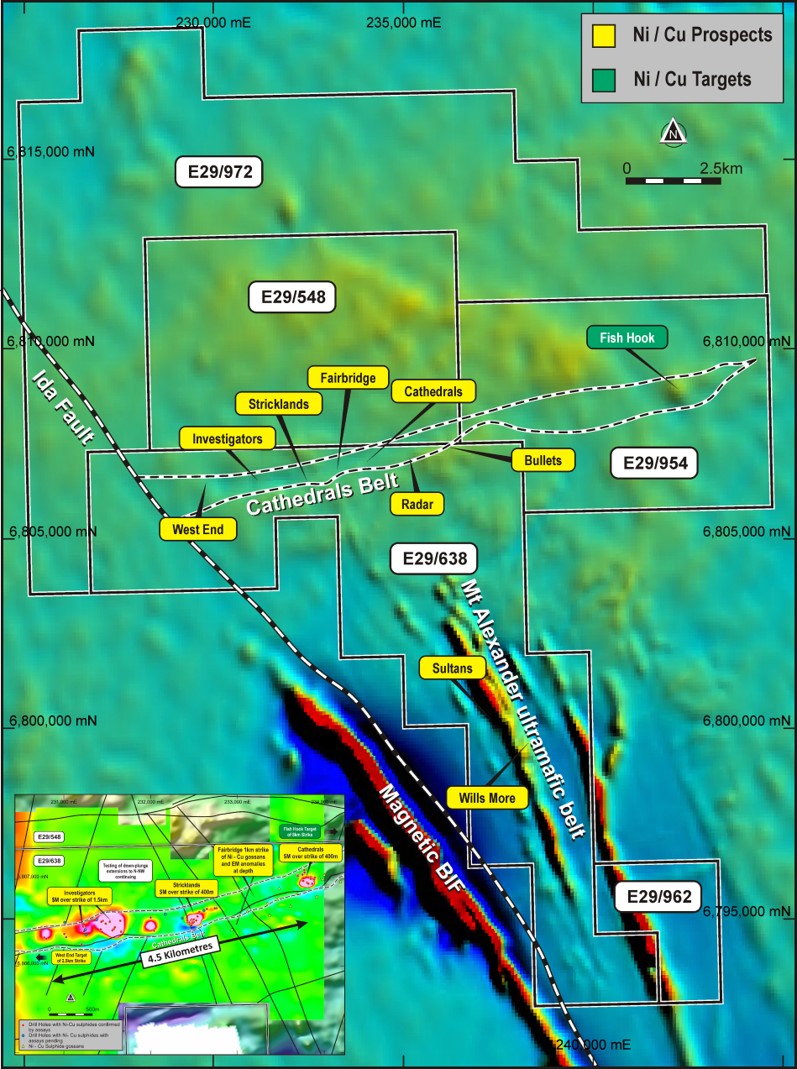Cathedrals Belt
The Cathedrals Belt has a unique geological setting. It is an east-northeast trending belt that hosts mineralised ultramafics within granites.
When St George acquired the Mt Alexander Project from BHP Billiton, there had been only one discovery of nickel-copper sulphides in the Cathedrals Belt. This was at the Cathedrals Prospect with mineralisation inferred over a 400m strike. Drilling by St George in 2016 identified further high-grade mineralisation at the Cathedrals Prospect, and discovered new deposits of nickel-copper sulphides at the Stricklands and Investigators Prospects. In 2019, St George also made a new discovery of massive nickel-copper sulphides at the Radar Prospect.
These new discoveries by St George increased the strike of recurrent mineralisation at the Cathedrals Belt to more than 5.5km.
Electromagnetic (EM) targeting for massive sulphides is very effective at the Cathedrals Belt, with all EM conductors drill tested having been confirmed as nickel-copper sulphide mineralisation.
Drilling in 2020 and 2021 focused on deeper drilling to test for continuity of the shallow discoveries already made. The mineral system at the Cathedrals Belt is an intrusive system, which typically host significant mineralisation at depth.
All deeper drill holes intersected the intrusive-host structure confirming it is open at depth.
A breakthrough discovery was delivered in April 2021 with drill hole MAD199 at Investigators intersecting more than 11m of nickel-copper sulphides at 333.5m downhole. This is the deepest intercept of mineralisation at the Cathedrals Belt and confirms that the intrusive host structure is fertile at depths beyond the detection limit of surface EM surveys.
Multiple off-hole EM conductors have been detected at depth by downhole EM surveys at Investigators and West End, giving encouragement that a significant volume of mineralisation may be present in this area.
The figure below is a plan view of the of the Cathedrals Belt (over TMI magnetics) showing key prospects.


